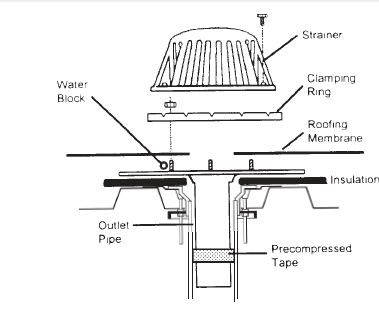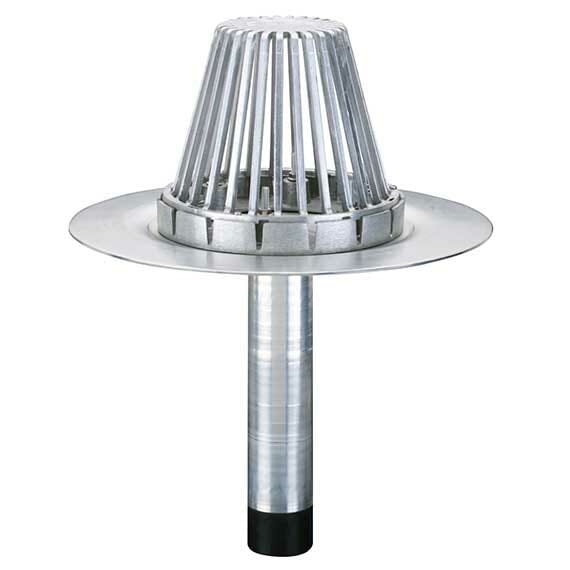1. Drains
a. Hercules Retrodrain (Our Pick)
-
- For flat roofs, the best type of drain is a Hercules Retrodrain. This downspout drain allows for water to fall into the center of the roof instead of pooling up and eventually sliding down a gutter.
- The Hercules Retrodrains we use offer larger diameters such as 3,4,5 & even 6 inch openings for maximum drainage efficiency. This is especially helpful in the rainy PNW conditions where we get lots of rain.
- The flange on these drains is coated with TPO or PVC for easy membrane seal (explained in #3)


b. Traditional Gutters
-
- You can also use normal gutters with cladded metal flashing attached to the eave.
- The flashing has a special coating that chemically welds with the TPO or PVC roofing material.

c. Bird Cages
-
- These are a much cheaper and accessible option and will do the job, but they’re not very durable and won’t last as long or do as good of a job filtering out debris which could lead to more clogs.
2. Framing a Skylight On a Flat Roof
-
- Skylights offer lots of natural light for your home and provide energy efficiency during the day as well.
- With a flat roof, framing in a skylight is simpler than a pitched roof. You don’t have to deal with as many angles this way.

3. Depending on the depth of your ceiling, you may need to build out a skylight tunnel (pictured below), which will require more material, so that’s something to keep in mind.
If you’re interested in having one built into your flat roof, give us a call to help you get it installed properly.

3. Roof Welding
-
- Your PVC or TPO roofing membrane is welded together using high-heat machines that chemically bond the pvc membrane with the special coated metal flashings attached to the edge of your roof for a watertight seal.
- Each pass of PVC or TPO material is heated by a special rolling tool (pictured below) that is heated to thousands of degrees to create the same chemical weld for a strong watertight seal.


If you found these tips helpful, leave a comment below. Reach out to us if you need any assistance setting up a consultation, or if you have any general roofing questions!
